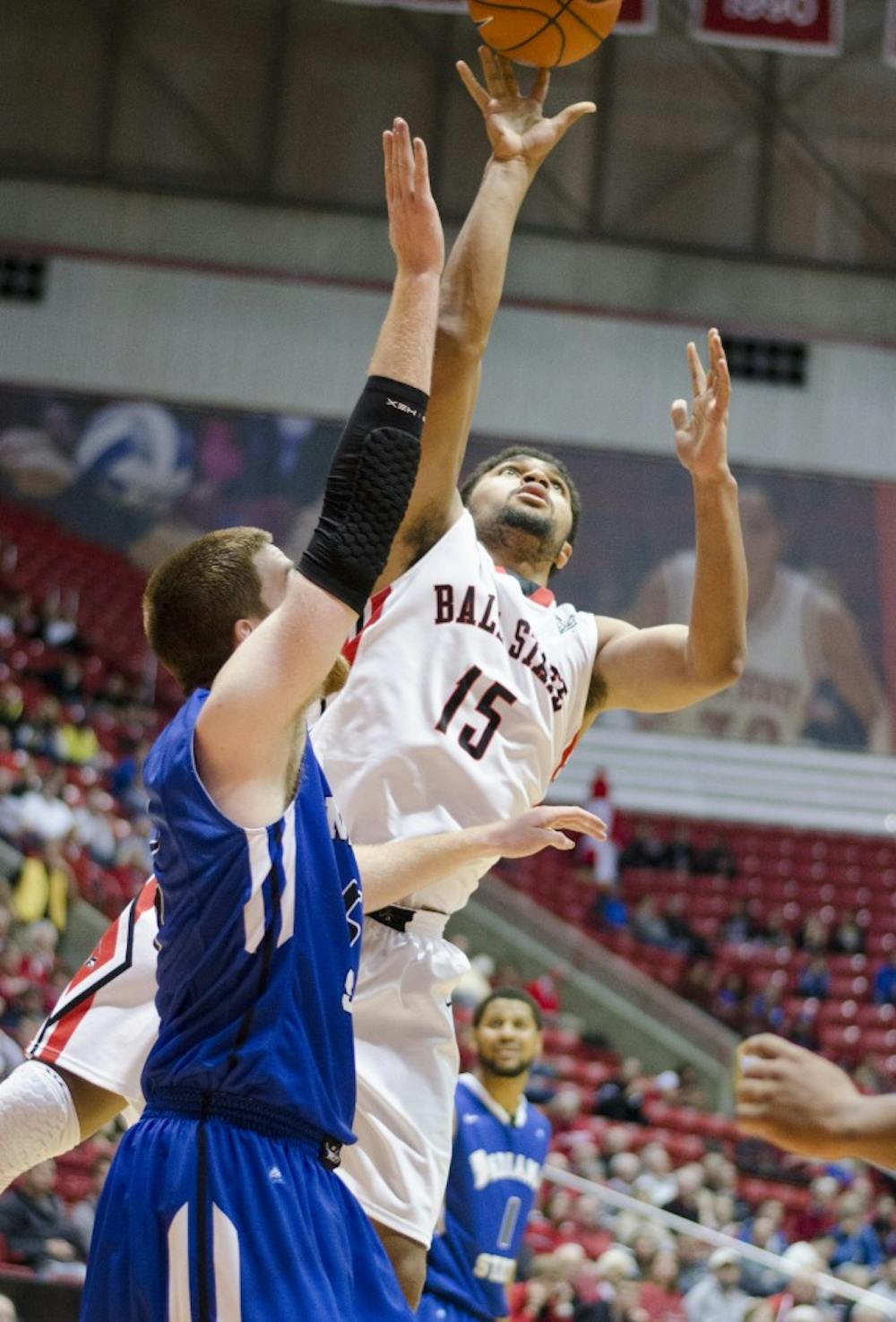Ball State offensive statistics (conference rank of 12 teams)
Field goal percentage: .423 (9th)
2-pointers made: 225 (12th)
2-pointers attempted: 489 (11th)
2-point field goal percentage: .460 (T-9th)
3-pointers made: 118 (6th)
3-pointers attempted: 321 (5th)
3-point field goal percentage: .368 (5th)
Points per game: 68.5 (7th)
The Ball State men’s basketball team has struggled to score at the rim.
It’s no secret.
Ball State has been outscored by its opponents in the paint in 11 of 15 games.
It’s also no coincidence the Cardinals are 3-0 in games which they outscore their opponents near the basket.
When the 3-point shot is dropping, as it has to the tune of a .368 percentage for the Cardinals this season, it helps cover for a lack of a consistent post presence. Out of 351 teams, Ball State currently owns the 81st best 3-point shooting percentage, according to ESPN.com, ranking above national contenders Duke, Wisconsin and Villanova.
Where teams like the Blue Devils, Badgers and Wildcats separate themselves from the pack is in their ability to dump the ball inside to freshman Jahlil Okafor, senior Frank Kaminsky and junior Daniel Ochefu respectively.
While there is no sure-fire NBA draft prospect on Ball State’s roster, as are Okafor and Kaminsky, the unit has struggled collectively from inside the arc. The Cardinals’ 225 made two-pointers ranks 343rd in the country.
In a game like the 58-46 loss on Jan. 17 at Bowling Green where Ball State only made five three-pointers, the inability to score inside becomes magnified.
“We got away from going inside [against Bowling Green],” second-year head coach James Whitford said. “That honestly had as much to do with our big guys as our guards. The fault lies both ways.”
With Ball State’s backcourt accounting for seven of the team’s 10 second half turnovers against Bowling Green, forward Franko House and center Matt Kamieniecki didn’t manage a shot.
House and Kamieniecki are the Cardinals' two tallest rotational players at 6-foot-6 and 6-foot-8 respectively, but neither is a prototypical inside presence.
Most of Kamieniecki’s points come off of offensive rebounds and broken plays, a testament to his determination and hustle, but he’s usually the fourth or fifth option on the court.
A sophomore, House is still learning how to become a team’s number-one scoring option inside after playing his freshman season behind former Cardinal Majok Majok. House’s .481 field goal percentage is a team-high, but he has attempted five shots or less in six of Ball State’s 15 games. Five of the Cardinals’ seven wins have come when House has at least six shot attempts.
Whitford said the losses at Western Michigan and Bowling Green have given his team an opportunity to look in the mirror, and that a loss does have its benefits.
“Losing a game, I don’t care who you are, I think it always helps refocus you a little bit,” he said.
Ball State will look to snap its two-game skid and improve on its 7-8 record on Jan. 21 against Ohio. Tip-off is scheduled for 7 p.m. at Worthen Arena.
“We’re not the favorite [in the Mid-American Conference], I know that,” Whitford, whose team is 2-2 in league play, said. “But I feel like we can compete with anyone in the league.”
Against the Bobcats, the Cardinals will compete with five players in the rotation that stand 6-foot-8 or taller.





